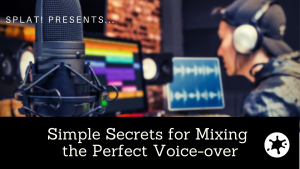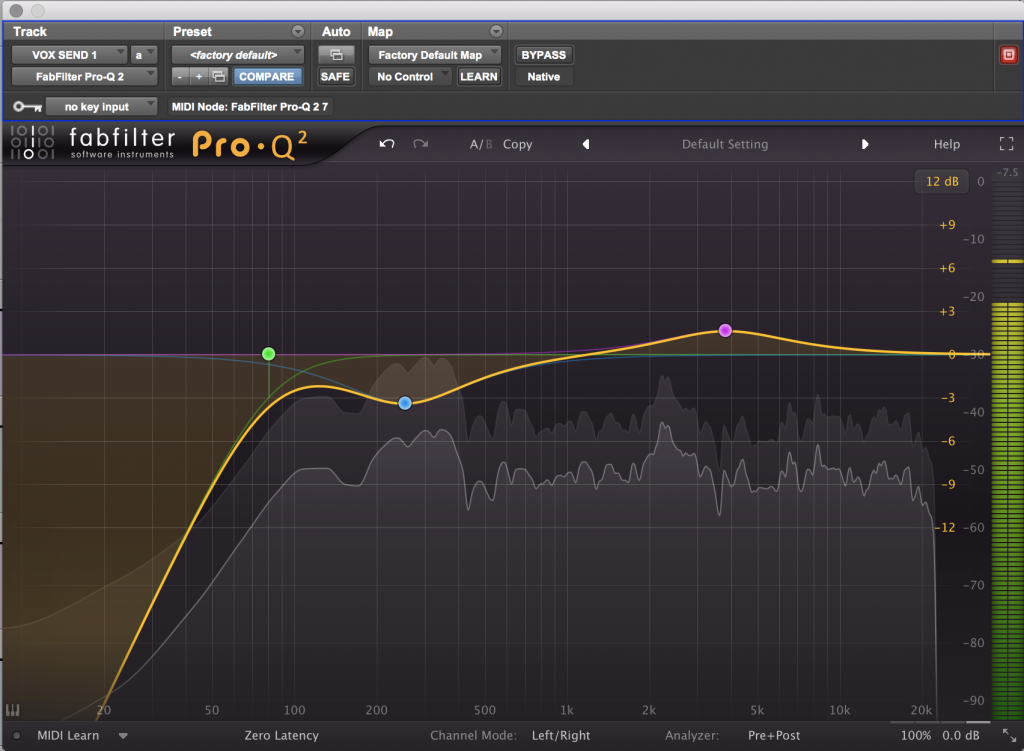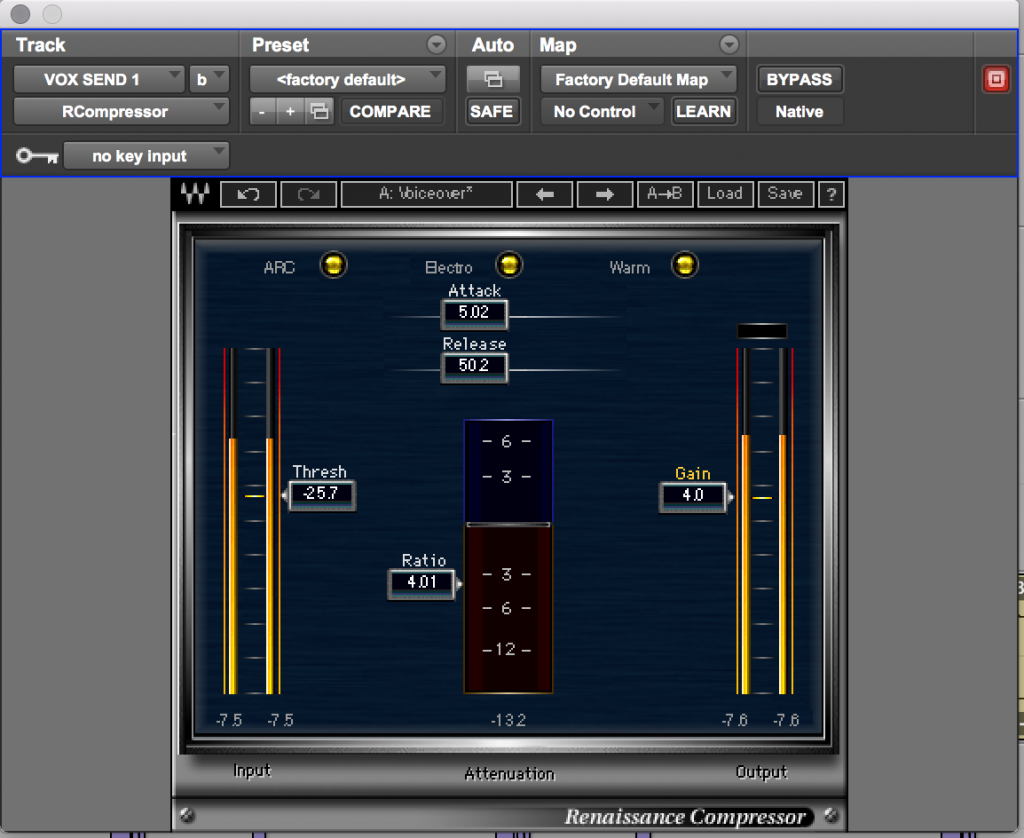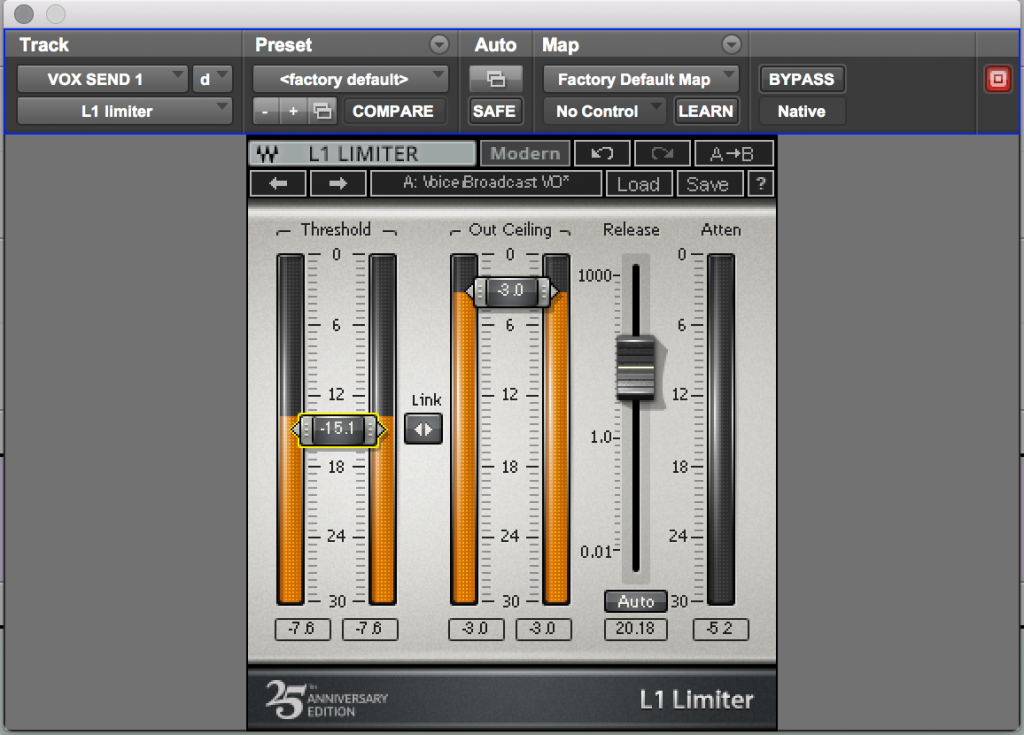EQ 4 VO – BIG BOOM edition
We’re always happy to welcome contributions from guest writers, producers, thinkers, creatives, friends, friends of friends, allies, etc. Here’s a lotta wisdom from one of our favorite polymaths, Tony Maddox. You may have seen his original and highly imaginative art and illustration work on his awesome website and you’ve no doubt heard his imaging work on Philly’s WMMR, WMGK and BEN-FM, where he’s worked with some of the biggest, boldest voices in the biz. Since big voices often come with big bottoms (low end frequencies, we mean) knowing how to tame the lowest lows is an art form in itself. Enough words from us, let’s let Tony share his…..
SIMPLE SECRETS TO MIXING THE PERFECT VOICE-OVER
(Quick note, none of the products mentioned in this article are endorsements or paid advertisements. They’re all products I purchased.)
A rock-solid VO is arguably the most important part of any piece of production. Chances are, if you’re working with a pro, the read will be spot-on. But often, with a great read comes a great big gigantic booming voice that can rattle your teeth out of your ears (this may or may not be scientifically accurate…). How do you wrangle that boom and cram the Voice of Zeus into an already-busy mix?
Time to turn to the tools of the trade. EQ, Compression, and Limiting. Let’s get to work.
Actually, hold that thought. Let me say one thing: THIS IS NOT THE ONLY WAY TO DO THIS! This is the process I use when I need to tame a big voice. There are many different philosophies about how production should sound, how the process should work, the order of your processing chain, whether or not you should process ANYTHING at all… This is what has worked for me for the past 19 years, but I LOVE to learn about new ways to do things. If you have a different way of going about this, please leave a comment! Learning from each other is the best way for us all to up our production game.
Now let’s get to work.
DON’T LET EQ FREAQ YOU
First thing to do is grab an EQ. Doesn’t matter which one, as long as it has enough bands to allow you to do some tinkering. I often use FabFilter Pro-Q 2 because I like the frequency spectrum visualizer and it has a lot of sexy features. But just as often, I turn to the stock EQ in whatever DAW I’m using. I prefer parametric EQs. They give me a lot of fine control and allow me to easily ‘sweep’ through frequencies. But use whatever you feel comfortable with.
Give your voice track a listen. If you’ve got other tracks in the session, solo it out. It might sound incredible. Full, deep, strong… that’s great. But unless you’re producing a dry sweeper, it is PRACTICALLY IRRELEVANT.
Why? THIS MIGHT BE THE MOST IMPORTANT THING to take away from this article. How the solo voice sounds goes right out the window once you start adding more sound to your mix. Frequencies start clashing, mixes muddy, sibilance runs amok!
The solution is dead simple–adjust your voice processing over music! Find a piece of music representative of the tracks you’ll use in your work, and lay them under your VO. Set a good level. Then, start EQing.
I know this seems obvious, but I have to confess something. I didn’t start adjusting my voice processing over music until later in my career. It never occurred to me. It seems so obvious now…
Anyway, where to start?
IF YOU LOVE BASS, SET IT FREE
This sounds counter-intuitive. In a mix, lowering the volume of ultra-low bass frequencies can actually make the overall volume of the bass louder. Those low frequencies take up huge amounts of energy, yet add little. Let’s cut out the sub-bass frequencies and allow the bass freqs we actually WANT to shine through. If your EQ has a HIGH-PASS FILTER or BASS CUT, set it to lower the volume (or ‘roll off’) everything from about 80 Hz down. You can be pretty aggressive here. There’s a lot of junk down there that will clash with the music you’re using. This might seem to thin out the voice more than you’re comfortable with. But the broadcast processing chain gives your production the beating of a lifetime, anyway. Plenty of those frequencies find their way back into the mix.
Next, go to around the 250 Hz area and try reducing the volume in that frequency. Anywhere from around 220 up to 400Hz will remove a lot of very boxy, undesirable sounds. They make a mix muddy and cheap.
Once you’ve done this, adjust the gain to make up for the volume you lost while EQing.
Chances are, these two cuts will fix about 90% of the problems you’re having. In fact, if that sounds good enough, stop! TRUST YOUR EARS! You’re a pro!
BUT WAIT! WHAT ABOUT TREBLE TROUBLE?
Hold that thought! We’ll tweak the treble in a bit. DON’T BOOST ANY FREQUENCIES BEFORE YOU COMPRESS! JUST REMOVE! It’s easier. Once you start tweaking an EQ through a compressor, things can get messy. Actually, you SHOULD try it. You should experiment with all your plugins.
Okay. If that VO is still struggling to sit in the mix, it’s time for…
A COMPRESSION SESSION!
Compression can seem intimidating, but the concept is simple. A compressor is an automated volume fader. That’s it. Imagine a mixer fader with an invisible finger on it. There’s your compressor. The settings adjust a few things, like the speed of the finger. Here’s a quick rundown of the ones you need to know:
Attack: The speed the invisible finger turns the volume down when things get too loud.
Release: The speed the invisible finger turns the volume back up after turning it down.
Threshold: This is when things get too loud.
Ratio: The amount the invisible finger moves the fader.
Make-up Gain: This allows you to set the overall volume of the audio after the compressor has done its job. These often have ‘AUTO’ settings, which can sometimes work well, but I usually set it myself.
Many compressors have other settings built in for sonic flavor, but I find them mostly useless for radio production. That said, I have used the Waves Renaissance Compressor the most. It adds a bit of a warm color to the sound, but it’s not something you notice in a screaming radio promo. I use it because it was the first one I ever used, and it’s dead simple.
Ultimately, it doesn’t matter what compressor you use, as long as you feel comfortable with it. Does it sound good? Then it’s the perfect compressor. TRUST YOUR EARS!
Let’s do this.
Here’s my typical compression starting point.
Attack: around 5ms. This is fast–as fast as a Limiter (which, by the way is a REALLY AGGRESSIVE compressor. We’re talking no mercy. It lops off peaks like a lawn mower).
Release: around 50ms. Also very fast–this compressor gets in and gets out without wasting time. If your compressor doesn’t have attack or release that fast, set it to the lowest number, and it should be fine.
Ratio: around 4:1. This means that the volume gets 4 decibels quieter for every decibel that it’s too loud (Threshold, remember?). That’s quite a flick of the invisible finger!
Threshold: this one you’ll have to adjust based on the volume of your voice track, as well as how the VO sits in the mix. Start lowering the threshold until you see some movement on your compressor’s meters. Then, start listening.
As you listen, you might start to hear what I like to call the ‘pressure’. It sounds like the voice is tightening up. It’s actually ‘pumping’. These settings are aggressive. They add some ‘punch’ to the voice track by reducing the loud parts and increasing the quiet parts quickly. The compressor rides the hills and valleys like a wild roller coaster.
Listen, and adjust the threshold until the ‘pressure’ goes too far. It makes the sound too flat and lifeless. Then back off. Try to find a sweet spot where the voice sounds punchy and the read has some contour, but the track isn’t flat. TRUST YOU EARS! You know what sounds good!
Make-up Gain: Set this last. Compression might lower the volume of your track. Increase this until the sound levels return to where they were. I find the VU meters handy for this. I bypass the plugin, look at the VU, then turn the plugin back on and adjust the Make-up until the meter hits the same spot. Or, you can set it to Auto. I won’t tell.
If you did everything correctly, the VO should now seem to sound louder, even though the dB level is the same. Nifty!
ARE WE THERE YET?
Listen again. Does everything sound the way you want it to? TRUST YOUR EARS! If it does, you’re done! I often find this is enough to whip a pesky VO into shape.
Still not quite there? Don’t panic!
TIME TO TREBLE!
Treble is a funny thing. Often, your voice tracks will arrive very sibilant. It might be tempting to embrace these high frequencies as the ‘air’ in the voice. But they might be getting you in a bit of treble trouble! If your voice track volume level looks good but you still can’t hear it, you might have too much of a high frequency somewhere. ADD ANOTHER EQ PLUGIN and try playing around with the frequencies from about 5kHz on up. You might find a harsh sound you can tame that might allow you to squeeze more volume out of your voice track. A de-essing plugin can be good for this, too. I use the stock one in Pro Tools, and I use the presets as a starting point. Try it out–it might surprise you how quickly this can fix a pesky voice track. I’ve even used de-essers on music tracks and sound effects when they’ve been too harsh.
While you’re here, this is a good time to play around with the upper-mid frequencies. They might add some clarity in the voice. I find with ultra-low voices, there is a sweet frequency in this range that adds a buttery, wispy croissant of focus. Mmm, croissants…
Did that fix your mix? If so, stop! You did it! Now, save those settings as pre-sets. Now you have a good starting point for next time. Move on to one of your other eleventeen-thousand jobs around the station.
Didn’t work? Look, do we need to…
SET SOME LIMITS?
Let’s chat for a second. It’s 2020. The producers making the music on your very radio station use EVERY TRICK IN THE BOOK. If it takes 20 different plugins on one track to find the sound a mix engineer is going for, she’s going to use it. I know the temptation exists to say that using a compressor and a limiter is overkill. In the end, we’re trying to get stuff done fast, make it sound good, and move on to the next project. Don’t worry. Use all the tools at your disposal. It’s okay. I once had to use 2 compressors, 3 EQs and a Limiter and a de-esser on a voice track. I had a LOT of stuff going on in the background…
So, slap on a Limiter. I use the Waves L1, which is a good, clean Limiter, but any will do–they all do the same thing. They decapitate audio peaks from waveforms like an 80s slasher flick bad guy.
I usually set the release to around 20ms, then go to town. Pull down the threshold until the Limiter reduces the biggest peaks on the meter. Then, push the Out Ceiling or Gain setting up to whatever you need, and this SHOULD get you where you need to be.
This is the processing chain I’ve used for 19 years, and it has served me well. I’ve swapped out other compressors, EQs and Limiters, but I always seem to come back to this set-up.
YOU’RE THE BEST AROUND!
In the end, TRUST YOUR EARS! You’re a pro! You know what sounds good. If this still didn’t get you where you need to be, try adding another EQ. Or another Limiter. Whatever it takes!
Another thing to try: EQ a bit of the low end out of the music and sound effects. This is something I did for years with John Wells. It was the only way to get that monster voice to sit in a mix.
That’s it! If you have any tried and true methods for taming a big voice, post them in the comments.
-Tony Maddox (follow Tony on Instagram here)




